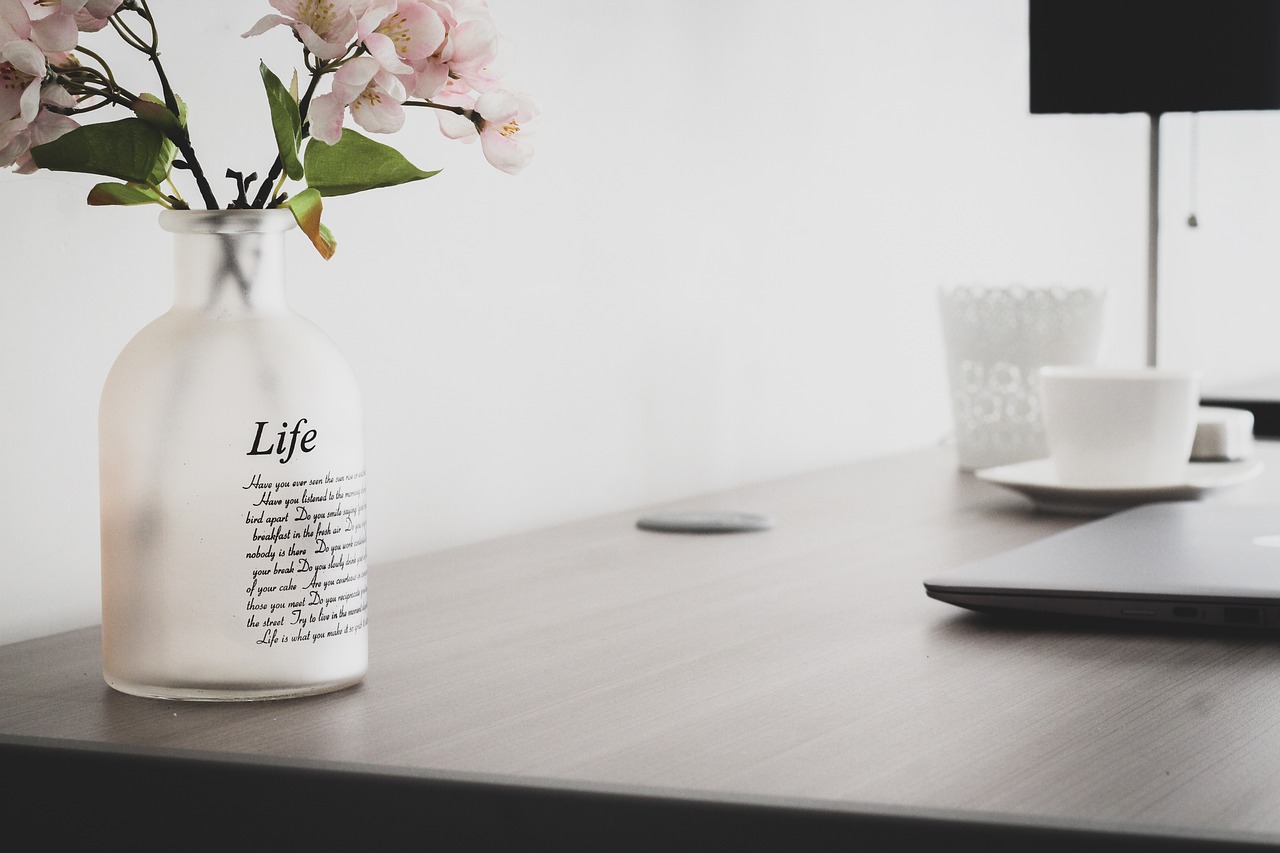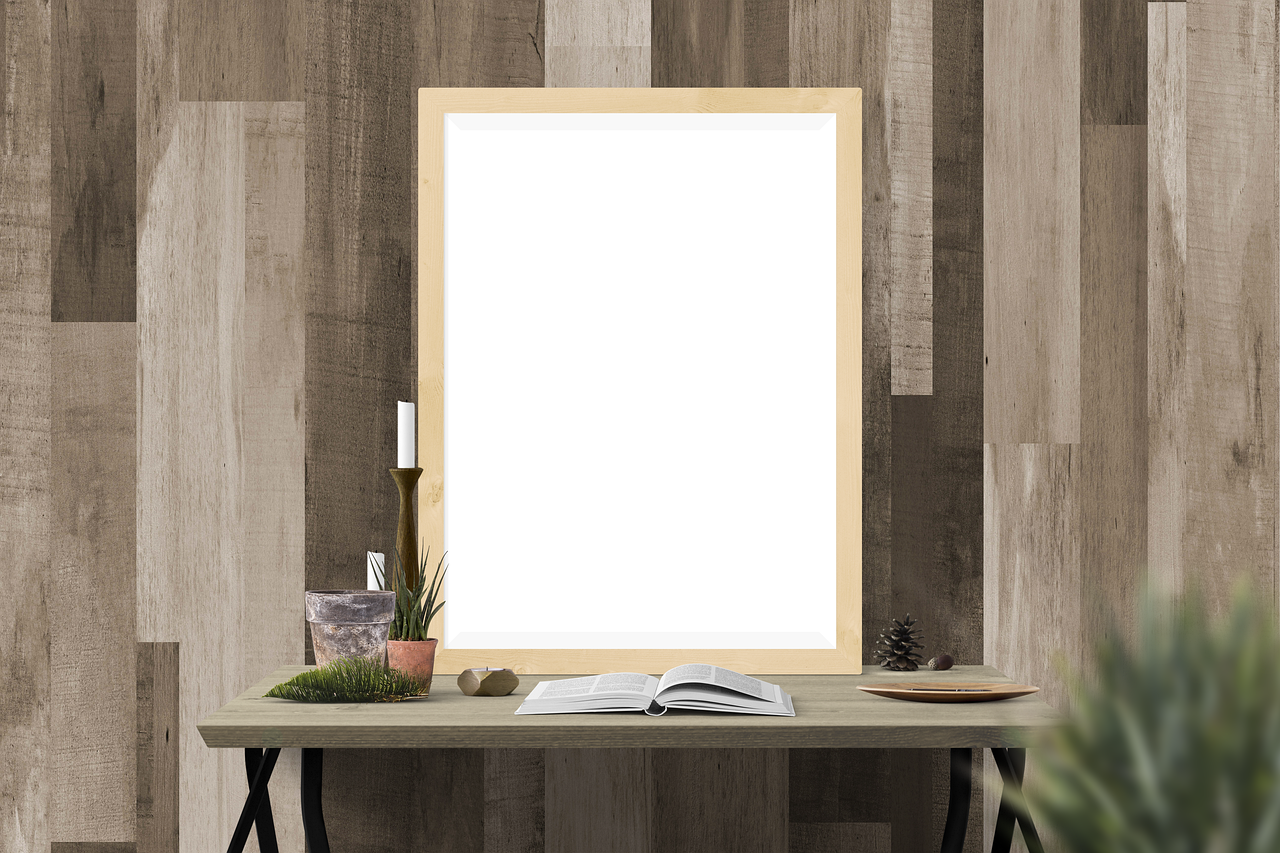Designing a Wooden Study Table: A DIY Guide
Creating a wooden study table can be one of the most rewarding DIY projects you embark on. Not only does it offer a chance to express your creativity, but it also results in a functional piece of furniture that can enhance your study environment. Imagine sitting at your very own handcrafted table, surrounded by books and ideas, feeling the satisfaction of having built something with your own hands. This guide aims to walk you through the entire process, from selecting the right materials to adding those final touches that make your table uniquely yours.
When it comes to building a wooden study table, selecting the right type of wood is absolutely crucial. Not all woods are created equal; some are more durable, while others offer a stunning aesthetic appeal. For example, oak is known for its strength and longevity, making it an excellent choice for a table that will see daily use. On the other hand, pine is lighter and more affordable, but it may not withstand heavy wear and tear as well as harder woods. To help you make an informed decision, here’s a quick comparison:
| Type of Wood | Durability | Price | Aesthetic |
|---|---|---|---|
| Oak | High | $$$ | Rich grain, classic look |
| Pine | Medium | $ | Light color, rustic charm |
| Maple | High | $$$ | Smooth, fine grain |
| Birch | Medium | $$ | Light color, modern appeal |
Ultimately, the choice of wood should reflect your personal style and the intended use of the table. Ask yourself: What kind of atmosphere do you want to create? Do you prioritize durability over aesthetics, or vice versa? These questions will guide you in selecting the best wood for your project.
Before diving into the construction phase, it’s important to gather all the necessary tools and materials. Having everything on hand will make the process smoother and more enjoyable. Here’s a list of essential items you’ll need:
- Saw - For cutting the wood to size.
- Drill - To create holes for screws and fittings.
- Screws - To assemble the table securely.
- Sanding paper - For smoothing out rough edges.
- Wood finish - To protect and enhance the wood's appearance.
By ensuring you have all these items ready, you’ll be setting yourself up for success. Remember, the right tools can make a world of difference in the quality of your work!
Accurate measurements and a solid plan are vital for a successful table. Start by measuring the space where you intend to place your study table. Consider not just the dimensions of the table itself, but also how it will fit with other furniture in the room. Once you have your measurements, create a detailed plan that includes the dimensions, shape, and any additional features you want to incorporate, such as drawers or shelves. A good plan is like a roadmap; it guides you through the construction process and helps avoid any costly mistakes.
Now that you have your measurements, it's time to design the table layout. Think about the dimensions that will best suit your needs. Do you want a large surface for spreading out books and papers, or a compact design that fits snugly in a corner? Consider features such as:
- Height
- Width
- Length
- Storage options
By carefully planning these aspects, you can create a functional and aesthetically pleasing table layout that perfectly suits your study habits.
Before you start cutting wood, take a moment to sketch your design. This visual representation will help you visualize proportions and features, ensuring that everything aligns with your initial plan. Don’t worry about being a professional artist; simple sketches can be incredibly effective. Think of it as a blueprint for your project, guiding you as you bring your vision to life.
The table frame is the backbone of your study table, providing stability and support. Begin by cutting the wood pieces to the appropriate lengths based on your design. Once you have all your pieces ready, assemble them carefully, ensuring that everything is square and level. This step is crucial, as a well-constructed frame will ensure that your table stands the test of time.
Finishing is where your table truly comes to life. It enhances the appearance and protects the wood from damage. There are various techniques to consider, such as sanding, staining, and sealing. Each method offers a different look and feel, so take your time to explore what resonates with you. A well-finished table not only looks great but also adds value to your home.
Different finishes can dramatically alter the look and feel of your table. For instance, using oil can bring out the natural grain of the wood, while varnish provides a protective layer that can withstand spills and scratches. Paint can also be a fun option if you want to add a pop of color. Consider the atmosphere you want to create and choose a finish that complements your style.
As you reach the final assembly stage, it’s time to put all the pieces together. Ensure that everything is secured properly, and double-check that the table is stable. Once everything is in place, you can step back and admire your handiwork. Your new study table is not just a piece of furniture; it’s a testament to your creativity and hard work.
Q: How long will it take to build a wooden study table?
A: The time required can vary based on your experience and the complexity of the design, but typically, it can take anywhere from a few hours to a couple of days.
Q: Do I need prior woodworking experience?
A: While prior experience can be helpful, many DIY enthusiasts have successfully built tables without it. Just follow the instructions carefully and take your time!
Q: What if I make a mistake during construction?
A: Mistakes can happen, but they can often be fixed. Keep a positive attitude and remember that every craftsman has made errors along the way.

Choosing the Right Wood
When it comes to crafting your own wooden study table, is not just a matter of aesthetics; it’s also about durability and functionality. Imagine your study table as the foundation of your creative space. Just like a house needs a solid base, your table needs the right material to withstand the test of time and daily use. So, what should you consider when selecting wood?
First, think about the hardwood vs. softwood debate. Hardwoods, such as oak, maple, and cherry, are renowned for their durability and resistance to wear. They provide a polished look and can last for generations if maintained properly. On the other hand, softwoods like pine and cedar are often more affordable and easier to work with, making them excellent choices for beginners. However, they can dent and scratch more easily, which might not be ideal for a study table that sees a lot of action.
Next, consider the grain and color of the wood. The grain pattern can dramatically affect the overall appearance of your table. For instance, a table made from walnut will have a rich, dark color with beautiful grain patterns that can make your study area feel warm and inviting. Alternatively, lighter woods like birch or ash can give a modern and airy feel. Think about the vibe you want to create in your workspace—do you want it to be cozy or sleek?
Furthermore, you should also take into account the environmental impact of your wood choice. Sustainable sourcing is becoming increasingly important in today’s world. Look for woods that are certified by organizations such as the Forest Stewardship Council (FSC). This ensures that your wood comes from responsibly managed forests, helping to preserve our planet for future generations.
To help you make an informed decision, here’s a quick comparison of some popular wood types:
| Wood Type | Durability | Aesthetic Appeal | Cost |
|---|---|---|---|
| Oak | High | Classic, strong grain | Moderate |
| Pine | Moderate | Light, rustic | Low |
| Maple | High | Light, smooth | Moderate |
| Walnut | High | Rich, dark | High |
As you can see, each wood type comes with its own set of characteristics. So, take your time to evaluate your options and think about what fits best with your style and needs. Remember, your study table is not just a piece of furniture; it’s a reflection of your personality and a tool that can enhance your productivity.
In conclusion, choosing the right wood for your study table is a crucial step that can significantly affect the final product. Whether you opt for the timeless elegance of hardwood or the affordability of softwood, make sure it aligns with your vision and purpose. Happy crafting!
Q: What is the best wood for a study table?
A: The best wood depends on your needs and budget. Hardwoods like oak and maple are excellent for durability, while softwoods like pine are more affordable and easier to work with.
Q: How do I maintain my wooden study table?
A: Regularly clean your table with a soft cloth, avoid harsh chemicals, and consider applying a protective finish to enhance durability.
Q: Can I mix different types of wood in my study table design?
A: Yes, mixing woods can create a unique and personalized look. Just ensure the woods complement each other in terms of color and grain.

Essential Tools and Materials
Before diving into the exciting world of DIY woodworking, it's essential to gather all the tools and materials you'll need for your wooden study table project. Think of this step as packing your toolbox for a grand adventure; without the right gear, you might find yourself stuck halfway through the journey! To make things easier, I've compiled a list of the essentials you'll want to have on hand.
First, let’s talk about the tools. These are the instruments that will help you shape your wood into the beautiful study table you envision. Here are some must-haves:
- Table Saw: For making straight cuts and achieving precise dimensions.
- Drill: Essential for creating holes for screws and dowels.
- Screwdriver: For driving screws into your pieces securely.
- Measuring Tape: Accuracy is key; you’ll want this for all your measurements.
- Clamps: These will hold your pieces together while the glue dries or while you screw them in place.
Next up, let’s not forget about the materials. Choosing the right wood is crucial, but you’ll also need some additional items to ensure your project goes smoothly. Here’s a quick overview:
| Material | Purpose |
|---|---|
| Wood (Pine, Oak, or Maple) | Main body of the table. |
| Screws | To hold the pieces together. |
| Wood Glue | For added strength and stability. |
| Sandpaper | To smooth out rough edges. |
| Finish (Stain or Varnish) | To protect and beautify the wood. |
Having the right tools and materials not only makes the process easier but also enhances the quality of your final product. Imagine trying to build a house without a hammer or nails—sounds like a recipe for disaster, right? So, take the time to gather everything you need, and you’ll be setting yourself up for success!
Now that you’re equipped with the essentials, you’ll be ready to move on to the exciting part: measuring and planning your table. Remember, preparation is key, and with the right tools and materials, your wooden study table will soon become a reality!
As you embark on your DIY journey, you might have a few questions swirling in your mind. Here are some common inquiries that can help guide you along the way:
- What type of wood is best for a study table? - Hardwoods like oak or maple are excellent for durability, while pine is a more affordable option.
- How much time will it take to build a wooden study table? - Depending on your skill level and the design, it can take anywhere from a few hours to a couple of days.
- Can I customize the size of my table? - Absolutely! Measure your space and adjust the dimensions to fit your needs.

Measuring and Planning
When it comes to building your own wooden study table, are the cornerstones of a successful project. Think of this phase as the blueprint for your dream table; without it, you might end up with a piece that doesn't fit your space or meet your needs. So, grab your measuring tape and let’s dive into the nitty-gritty of getting those dimensions just right!
First off, you need to assess the space where your table will reside. Is it a cozy nook in your bedroom, or perhaps a more spacious area in your living room? Start by measuring the length and width of the space. It's essential to consider not just the dimensions of the table itself, but also how much room you’ll need to move around it comfortably. After all, nobody wants to feel cramped while trying to focus on their studies!
Once you have the dimensions of your space, it’s time to decide on the size of your table. A good rule of thumb is to allow at least 36 inches of clearance around the table for chairs and movement. If you’re planning to use a chair with armrests, you might want to add a little extra room. Here’s a quick reference table to help you visualize:
| Table Size | Recommended Room Size |
|---|---|
| 48" x 24" | 6' x 8' |
| 60" x 30" | 8' x 10' |
| 72" x 36" | 10' x 12' |
With your space and desired table size in mind, it’s time to create a detailed plan. This plan should include not just the dimensions, but also the features you want your table to have. Will it include drawers for storage? Perhaps a shelf underneath? Consider the functionality of your table, as this will greatly influence its design.
To help visualize your project, sketching your design is a fantastic idea. Grab some graph paper or use a digital tool if you prefer. Draw out your table’s dimensions and play around with different layouts. This can be as simple or as complex as you like, but having a visual reference will make the building process much smoother. Remember, you’re not just creating a table; you’re crafting a space that will enhance your productivity and style!
In summary, measuring and planning is not just a step in the process; it’s the foundation of your project. By taking the time to accurately measure your space, determine the right dimensions for your table, and sketch a detailed plan, you’re setting yourself up for success. So take a deep breath, grab those tools, and let’s get ready to build!
- What tools do I need to measure accurately? A tape measure, a square, and a level are essential tools for accurate measuring.
- How do I know what size table is best for my needs? Consider how you will use the table, the number of people who will use it, and the space available.
- Can I modify my design later? Yes! Flexibility is key in DIY projects; just keep in mind the impact on measurements and materials.

Designing the Table Layout
Designing your wooden study table layout is not just about slapping some wood together; it’s an art form! Imagine this: you walk into your study space, and your table not only serves its purpose but also elevates the entire room’s vibe. To achieve this, you need to consider a few essential factors that will influence the overall functionality and aesthetics of your table.
First and foremost, think about the dimensions. How much space do you have? Measure your area carefully, keeping in mind that you want your table to fit comfortably without overwhelming the room. A table that's too large can make a space feel cramped, while one that's too small might not provide enough workspace. Generally, a width of 60-72 inches is ideal for a study table, providing ample room for books, laptops, and other essentials.
Next, consider the features you want to incorporate. Do you need drawers for storage? Perhaps a shelf underneath for books? Maybe a specific design style that matches your room's decor? Think about how you use your study space and what additional features would enhance your experience. For instance, if you often work with multiple screens or need space for notes and sketches, a larger surface area might be necessary.
Another crucial aspect is the ergonomics of your table. You want to create a layout that promotes comfort and productivity. The height of your table is critical; it should allow you to sit comfortably with your feet flat on the floor and your elbows at a 90-degree angle while typing or writing. On average, a height of 28-30 inches works well for most people, but you might want to adjust based on your personal height.
Once you have a rough idea of your dimensions and features, it’s time to get creative! Sketching out your design can be incredibly helpful. Visualizing your table layout will allow you to see how everything fits together. Don’t worry about making it perfect; the goal is to get a sense of proportion and scale. You can use graph paper or a simple drawing tool to map out the design, including where each component will go.
In summary, designing the table layout involves a blend of practicality and creativity. By carefully considering dimensions, features, and ergonomics, and by visualizing your ideas through sketches, you can create a study table that is not only functional but also beautifully complements your space. Remember, this table will be your companion in countless hours of study, so make it count!
- What type of wood is best for a study table? - Hardwoods like oak or maple are excellent choices for durability and aesthetics.
- How do I determine the right height for my study table? - A height of 28-30 inches is standard, but adjust based on your height for maximum comfort.
- Can I customize my table design? - Absolutely! Personalize your table with features like drawers, shelves, or unique shapes to suit your needs.

Sketching Your Design
When it comes to building your own wooden study table, is one of the most exciting yet crucial steps you can take. Think of it as laying the foundation for a beautiful house; without a solid blueprint, things can get messy fast! A sketch not only helps you visualize your ideas but also allows you to play around with dimensions and features before you even touch a piece of wood. So, grab a pencil and paper, and let’s dive into the creative process!
Start by considering the dimensions of the space where your table will reside. Is it a cozy nook in your bedroom or a spacious area in your home office? Measure the space carefully, taking note of the height, width, and depth that will suit your needs. Remember, a table that’s too large can overwhelm a small room, while one that’s too small might not provide the functionality you require. You can jot down these measurements directly on your sketch, which will serve as a handy reference as you move forward.
Next, think about the features you want to incorporate into your design. Do you need drawers for storage, or will open shelving suffice? Maybe you envision a sleek, minimalist look, or perhaps a more traditional style with ornate legs. Whatever your preference, sketching out these elements will help you see how they fit together. For instance, if you’re considering adding shelves, draw them in to see how they affect the overall look and functionality. This step is all about experimentation—don’t be afraid to try different layouts!
It’s also beneficial to create a scaled drawing. Using graph paper can be a game changer here. Each square can represent a specific measurement, making it easier to maintain proportions. This way, you can visualize the actual size of your table in relation to your room, ensuring that everything is both practical and aesthetically pleasing. If you’re feeling adventurous, consider using design software or apps that allow you to create 3D models of your table. This can give you a better sense of how your final product will look in real life.
Finally, once you have a solid sketch, take a moment to review it. Ask yourself questions like: Does this design meet my needs? and Am I excited about how it looks? If the answer is no, don’t hesitate to make adjustments. After all, this table is going to be a part of your daily life, and it should reflect your personal style and functional requirements. Once you’re satisfied with your design, you’ll feel a sense of accomplishment that will carry you through the building process!

Building the Table Frame
Building the frame of your wooden study table is like laying the foundation of a house; it’s essential for ensuring the entire structure is stable and functional. To get started, gather your materials and tools. You’ll need sturdy wood pieces for the legs and the tabletop support, as well as screws and wood glue for assembly. The frame typically consists of four legs and a rectangular support structure that connects them, providing the necessary strength and stability.
First, measure and cut your wood according to the dimensions you’ve planned. For a standard study table, legs should be about 28 to 30 inches tall, depending on your height and comfort. When cutting, ensure your angles are precise; using a miter saw can make this task easier. After cutting, lay out your pieces on a flat surface to visualize how they’ll fit together. This step is crucial, as it allows you to make any adjustments before you start assembling.
Next, it's time to assemble the frame. Start by attaching the legs to the support beams using screws. Pre-drill holes to prevent the wood from splitting, and apply wood glue for extra strength. Make sure to secure the legs at a right angle to the support beams; this will help maintain the table's stability. A level can be helpful here—place it on the support beams to ensure everything is even.
Once the legs are attached, reinforce the structure by adding cross braces. These are diagonal pieces of wood that connect the legs and provide additional support. Not only do they enhance the frame's strength, but they also help prevent wobbling. When positioning the cross braces, consider placing them about halfway up the legs for optimal support.
After assembling the frame, take a moment to inspect your work. Look for any loose screws or wobbling legs. If everything appears sturdy, you can proceed to sand the frame to smooth out any rough edges. This step is important, as it will ensure a comfortable experience when you lean against or touch the table. Use a fine-grit sandpaper for the best results.
Finally, once your frame is built and sanded, you can move on to attaching the tabletop. Align it carefully with the frame and secure it using screws from underneath, ensuring a clean finish on top. With the frame complete and the tabletop secured, you’re one step closer to having your beautiful, custom wooden study table ready for use!
- What type of wood is best for a study table?
Hardwoods like oak, maple, or walnut are ideal due to their durability and aesthetic appeal. However, softer woods like pine can also work well, especially for budget-friendly projects.
- How do I ensure my table is level?
Use a level tool during assembly to check that all legs are equal in height. Adjust accordingly by sanding down any uneven legs.
- Can I customize the design of my table?
Absolutely! Feel free to modify the dimensions and add features like drawers or shelves to suit your needs.
- What finish should I use for my wooden table?
Choosing a finish depends on your desired look; options include oil for a natural appearance, varnish for durability, or paint for a pop of color.

Finishing Touches
When it comes to crafting your own wooden study table, the are where the magic truly happens. This is your opportunity to transform a plain piece of wood into a stunning centerpiece that not only looks good but also withstands the test of time. Think of finishing as the cherry on top of your DIY sundae; it enhances everything you've worked hard to create. But how do you ensure that your finishing techniques elevate your table to the next level?
First off, let’s talk about sanding. This is a crucial step that many DIY enthusiasts might overlook, but trust me, it’s essential. Sanding smooths out any rough edges and imperfections, making your table not only aesthetically pleasing but also safe to use. Start with a coarse grit sandpaper to tackle the rough spots, and then gradually move to a finer grit for a silky finish. It’s like giving your table a spa day—who doesn’t love that?
Once your table is sanded to perfection, it’s time to choose a stain or paint. This decision can feel overwhelming due to the vast array of options available. Consider the mood you want to create in your study space. Do you prefer a warm, rustic look? Go for a rich walnut stain. Want something modern and sleek? A matte black paint might be your best bet. Here’s a quick overview of some popular finishing options:
| Finish Type | Characteristics | Best For |
|---|---|---|
| Oil | Enhances natural grain, easy to apply | Natural, rustic looks |
| Varnish | Durable, water-resistant, high gloss | High-traffic areas |
| Paint | Completely changes the look, available in many colors | Modern aesthetics |
After applying your chosen finish, don’t forget to seal it. A good sealant will protect your masterpiece from spills, scratches, and general wear and tear. Think of it as an armor for your table. You wouldn’t want your hard work to go to waste, right? Apply the sealant according to the manufacturer’s instructions, and allow ample time for it to cure. This step is vital, especially if you plan on using your table for studying or working, as it will keep it looking fresh for years to come.
In the end, the finishing touches are what truly personalize your wooden study table. They reflect your style and the effort you put into the project. So take your time, choose wisely, and enjoy the process. After all, this table isn’t just a piece of furniture; it’s a testament to your creativity and hard work!
- What type of wood is best for a study table? - Hardwoods like oak, maple, or walnut are great choices due to their durability and aesthetic appeal.
- How long should I wait for the finish to dry? - Drying times vary by product, but generally, you should allow at least 24 hours before using the table.
- Can I use a water-based finish? - Yes, water-based finishes are great for indoor furniture, as they dry quickly and have lower odor levels.

Choosing the Right Finish
When it comes to completing your DIY wooden study table, is like putting the cherry on top of a delicious cake. A good finish not only enhances the beauty of the wood but also protects it from wear and tear. Think of it as the armor that keeps your table looking fresh and new for years to come. So, how do you navigate the sea of options available? Let’s break it down.
First off, you need to consider the type of wood you’re using. Different woods absorb finishes differently. For instance, softwoods like pine may require a different approach than hardwoods like oak or walnut. If you want to maintain the natural look of the wood, you might opt for a clear finish, while a stained finish can add a touch of color and character. Here are some common types of finishes you might encounter:
- Oil Finishes: These penetrate deeply into the wood, enhancing its natural grain and providing a warm, rich look. They are easy to apply and reapply, making them a favorite among DIY enthusiasts.
- Varnish: This provides a hard, protective layer on the surface. It comes in various sheens, from matte to glossy, allowing you to customize the look of your table.
- Polyurethane: Known for its durability, this finish is excellent for surfaces that will see a lot of use. It’s resistant to scratches and water, making it a practical choice for a study table.
- Paint: If you’re looking for something bold, paint can completely transform the appearance of your table. Just remember to use a primer for the best results!
Next, consider the environment where your table will be placed. If it’s in a sunny room, UV protection becomes crucial to prevent fading. Similarly, if you’re in a humid area, a finish that offers moisture resistance is essential. You wouldn’t want your beautiful creation to warp or crack due to environmental factors!
Application methods also play a significant role in the final outcome. Some finishes are brushed on, while others can be sprayed or wiped on. Each method has its pros and cons. For example, spraying can give a smooth, even coat but may require more skill and equipment. On the other hand, brushing is straightforward and allows for more control, especially in tight spaces.
Finally, don’t forget about the drying time. Some finishes dry quickly, allowing you to apply multiple coats in a day, while others may take longer. Be sure to plan your project accordingly, as patience often leads to a better finish. Remember, rushing through this step can lead to unsightly drips or uneven surfaces.
In summary, choosing the right finish for your wooden study table is a blend of personal preference and practical considerations. Whether you lean towards the natural look of oils or the durability of polyurethane, each option has its unique benefits. Take your time to experiment and find what resonates with your style and needs.
Q: Can I mix different types of finishes?
A: It's generally not recommended to mix finishes, as they may not adhere properly to each other, leading to peeling or flaking. Stick to one type for the best results.
Q: How often should I reapply the finish?
A: This depends on the type of finish and the amount of use your table gets. Typically, oil finishes may need to be reapplied every 6-12 months, while varnish or polyurethane can last several years.
Q: Is it necessary to sand between coats of finish?
A: Yes, lightly sanding between coats helps create a smoother surface and improves adhesion for the next layer. Just make sure to clean off any dust before applying the next coat!

Final Assembly and Installation
Congratulations! You've made it to the final assembly and installation stage of your DIY wooden study table. This is where all your hard work comes together, and you can finally see your vision materialize into a beautiful piece of furniture. But before you dive in, let’s take a moment to ensure that everything is in order. First, gather all your components: the table top, legs, supports, and any additional features like drawers or shelves. It’s essential to have everything within reach to streamline the assembly process.
Start by flipping the table top upside down on a soft surface to prevent any scratches. Lay out the legs and supports according to your design. If you’ve followed your measurements correctly, everything should fit snugly. The next step is to attach the legs to the underside of the table. Use wood glue for a strong bond, but don’t forget to reinforce it with screws for added stability. It’s like putting together a puzzle—make sure each piece aligns perfectly before tightening those screws.
Here’s a quick checklist to ensure you won’t miss anything during assembly:
- Check that all parts are sanded and free of splinters.
- Ensure you have the right screws and tools ready.
- Double-check your measurements one last time.
Once the legs are attached, it’s time to install any additional features. If you opted for drawers, now is the moment to fit them into their designated spaces. Make sure the slides are aligned correctly to ensure smooth operation. Think of it as orchestrating a symphony; everything needs to work in harmony!
After securing all components, carefully flip the table upright. This can be a bit of a two-person job, especially if your table is large. Once it’s standing, take a moment to admire your handiwork. Is it sturdy? Does it wobble? If so, you might need to adjust the leg heights or ensure that all screws are tightened properly. A well-constructed table should feel solid and stable, ready to support your study sessions for years to come.
Finally, consider adding felt pads to the bottom of the legs. This will protect your flooring and make it easier to move the table if needed. Once everything is set, give your table a good wipe down to remove any dust or fingerprints from the assembly process. Now, step back, take a deep breath, and enjoy your new wooden study table! You did it!
Q: What type of wood is best for a study table?
A: Hardwoods like oak or maple are excellent choices due to their durability and aesthetic appeal. However, softer woods like pine can also work if you're on a budget.
Q: How long does it take to build a wooden study table?
A: The time varies based on your experience and complexity of the design, but generally, it can take anywhere from a few hours to a couple of days.
Q: Do I need special tools to build a study table?
A: Basic woodworking tools like a saw, drill, and screws are essential. If you have access to a sander and clamps, they can make the process easier and more efficient.
Q: Can I customize my study table?
A: Absolutely! Customize dimensions, add features like drawers, or choose a unique finish to make it your own.
Frequently Asked Questions
- What type of wood should I use for my study table?
Choosing the right wood is essential for both durability and aesthetics. Popular options include oak, known for its strength; pine, which is lightweight and easy to work with; and maple, valued for its smooth finish. Consider your budget and the look you want to achieve when making your selection.
- What tools do I need to build a wooden study table?
Before diving into your DIY project, gather essential tools such as a circular saw, drill, screws, and sanding paper. Having the right tools on hand will make the construction process smoother and more enjoyable.
- How do I measure and plan for my study table?
Accurate measurements are crucial! Start by measuring your available space and considering the dimensions you want for the table. Create a detailed plan, including dimensions and features, to guide your construction process.
- Can I customize the design of my study table?
Absolutely! Personalizing your study table is part of the fun. Think about the features you need, such as shelves or drawers, and sketch out a design that reflects your style and meets your functional needs.
- What finishing options are available for my wooden table?
Finishing enhances both the appearance and longevity of your table. Options include oil for a natural look, varnish for a glossy finish, and paint for a pop of color. Choose a finish that complements your wood type and personal style.
- How do I ensure my study table is stable?
Stability comes from a well-constructed frame. Make sure to securely assemble all components, using proper joints and fasteners. Double-check your measurements to ensure everything fits snugly together.
- What should I do if I encounter issues during assembly?
Don’t panic! It's common to face challenges during the assembly process. Take a step back, review your plan, and troubleshoot any issues. You can also seek advice from online forums or DIY communities for tips and solutions.



















